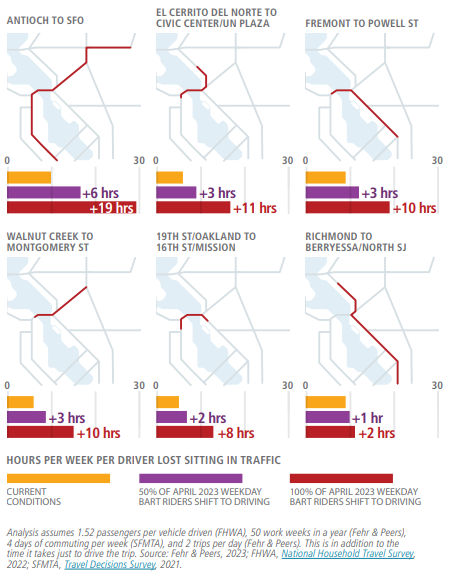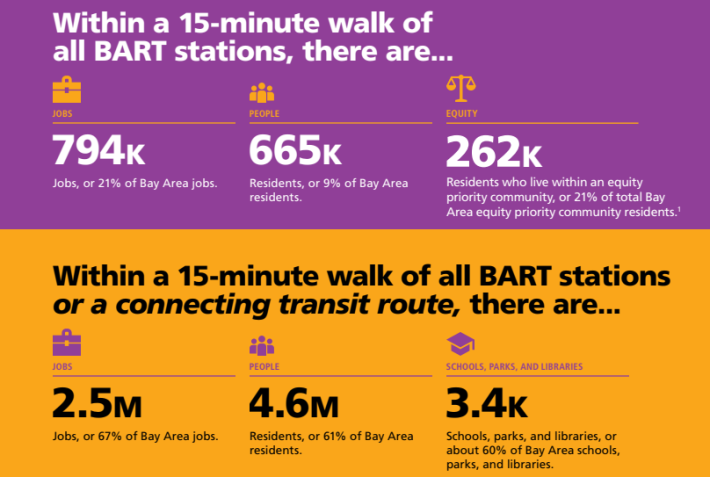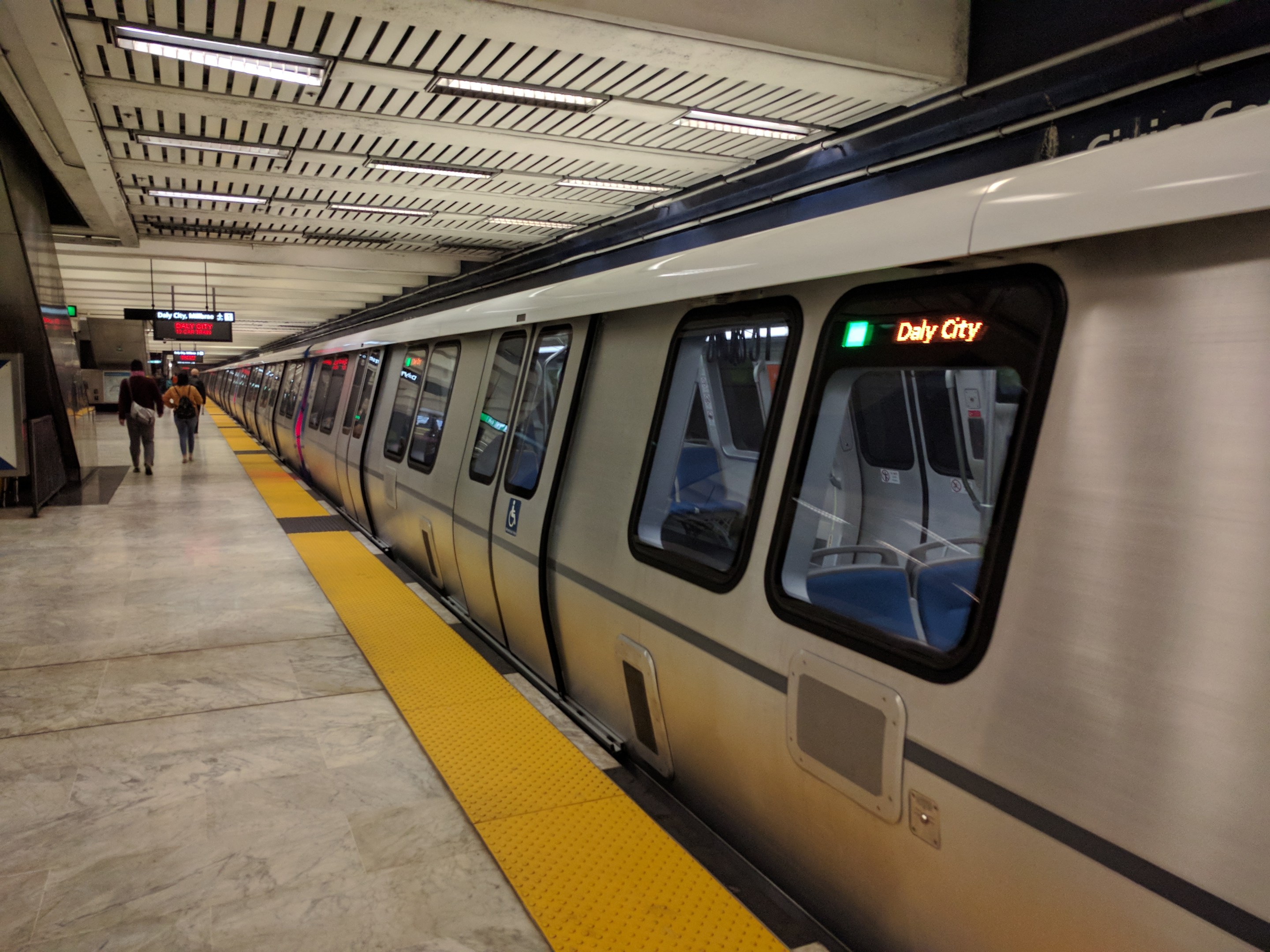Note: GJEL Accident Attorneys regularly sponsors coverage on Streetsblog San Francisco and Streetsblog California. Unless noted in the story, GJEL Accident Attorneys is not consulted for the content or editorial direction of the sponsored content.
The pandemic changed rider patterns and transportation demand. No longer are the majority of trips between downtown San Francisco and the rest of the region. That was just one of the findings confirmed by BART's Role in the Region, a new 60-page study conducted by BART staff and the consultants at Fehr & Peers to figure out how the system can best serve an evolving Bay Area.
One thing that's clear from the study: the Bay Area still depends on BART and in more ways than people realize.
"Work trips are now 61 percent of BART trips compared to 70 percent
in 2018," write the study authors. But loads of people still depend on BART, just in different ways from before the pandemic. "In their place, trips to visit friends and family have grown by 4 percent, and school, airport, concert, and medical trips have slightly increased their shares."

Unfortunately, due to decades of poor urban planning, too many places people want to go are spread across miles of urban sprawl. In Streetsblog's view, BART also suffers from years of bad planning on extensions, such as the Antioch and the Dublin/Pleasanton lines, which were placed in freeway medians instead of on surviving rail rights of way that connect through the region's historic town centers. As a result, these lines work for commuters heading to downtown Oakland and San Francisco, but leave historic, walkable town centers such as downtown Livermore and old town Pittsburg out of reach.
"The shift in travel from places well served by BART to places not well
served by BART is making some travelers less likely to choose BART," continues the study. "This helps explain why transbay traffic has returned while BART's transbay ridership has not."
Nevertheless, BART still serves many destinations, such as airports, sports venues, and many suburb-to-suburb trips. And it's not as if demand for trips to downtown has gone away completely. The study argues for continuing to facilitate all of these trips, with more evening and off-peak service. But it cautions that the historic funding model that depends on fare-box recovery from 9-to-5 commuters is just not sustainable.
Some 60 percent of BART's operating costs were covered by fares before the pandemic. That was compared to about 30 percent as the national average for transit systems.
It's essential that BART remain well funded to serve present and future needs. Young people still use BART, as do people too poor to own a car. "Young adults want to use and live near transit. Gen Z prefers to live in urban settings accessible to transit, while driving less often. In a 2023 survey, over 40 percent of Gen Z and Millennial potential homeowners listed having transit nearby as a very important factor in deciding where to live," continues the study. "In addition, a 2021 survey on San Francisco commute patterns shows young adults aged 18 to 34 are more likely than those aged 35 or older to use transit for their trips."
What if BART just reduced operations to save money? The result would be catastrophic, even for people who don't use BART, argue the authors. It would have ripple effects on the economy, depriving people of access to jobs. Traffic has returned to pre-pandemic levels. Therefore, for people who drive, losing BART would mean even longer, more grueling commutes, as shown in the chart below:

BART remains vital to the region's economy. The chart below attempts to put that in perspective:

All in all, the study is a strong argument—yet again—for realizing the goals of Seamless Bay Area. As the map below and the chart above indicate, it's essential to make transfers between transit modes easy, with minimum wait times. That would make the BART system far more useful in the post-COVID era, because it would allow people to reach so many more destinations outside downtown San Francisco.

The study concludes with a strong argument for continuing to expand the Clipper BayPass program, a universal ticket pilot across BART and other Bay Area transit operators. Either way, reducing BART service frequencies would be penny wise and pound foolish, considering the effects that would have on the prosperity of the region. The study features first-person rider accounts to back up those statistical conclusions.
“The Bay Area and our regional transportation network have undergone significant changes since BART last conducted a Role in the Region study in 2016," said BART General Manager Bob Powers in a release about the study. “The 2024 Role in the Region Report arrives at a crucial crossroads for BART and the region, and the data, analyses, and stories within will serve as an important educational resource for the pivotal years ahead.”
Be sure to check out the full study here.





